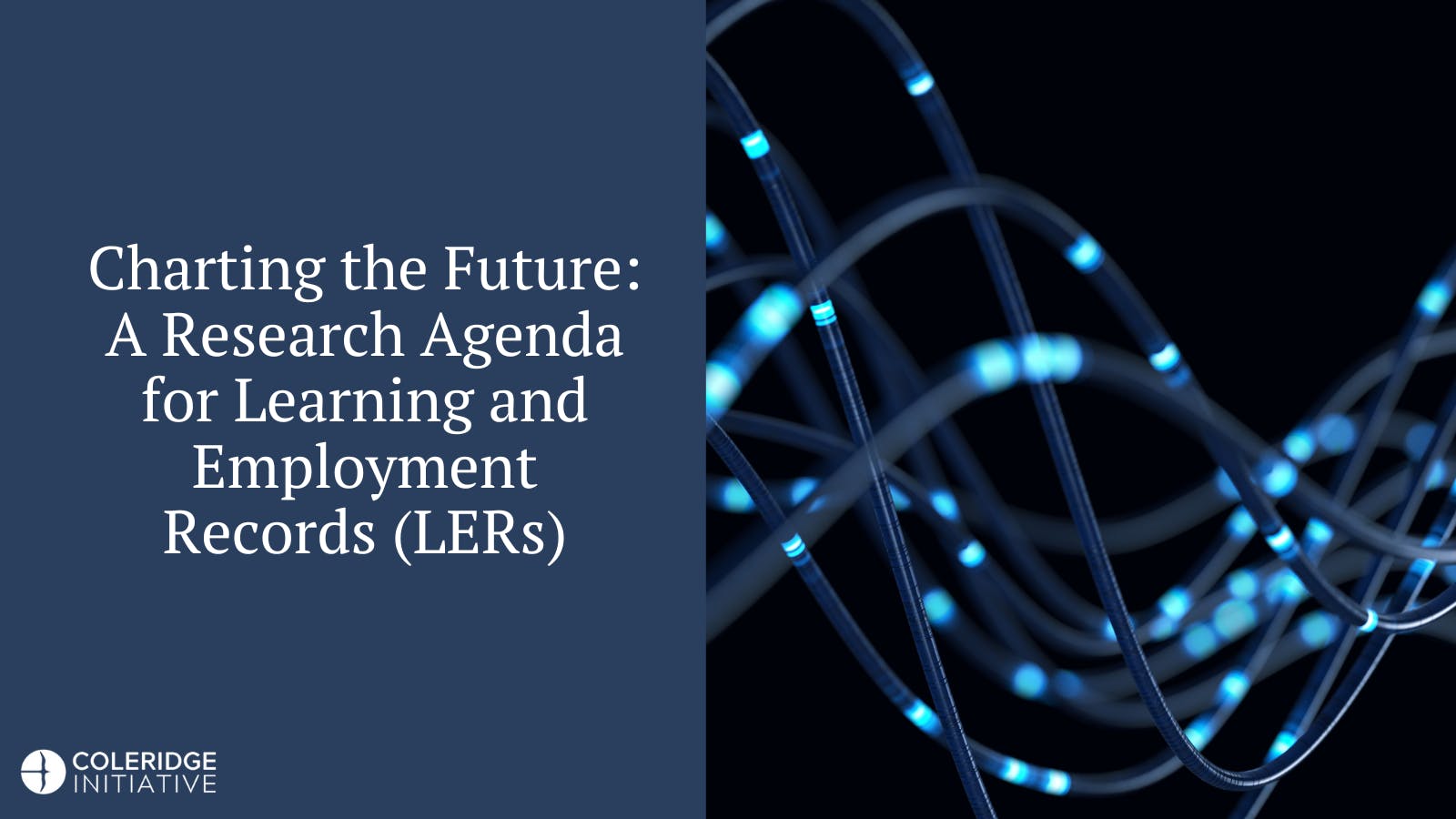
16 Apr 2024
Charting the Future: A Research Agenda for Learning and Employment Records (LERs)
Introduction
As the workforce evolves alongside rapid technological advancements, Learning and Employment Records (LERs) have emerged as pivotal tools for advancing skills-based hiring practices. This blog outlines a focused research agenda in three key themes to explore how LERs can transform not just individual careers but also organizational practices and the broader economy. These themes are not exhaustive, but rather focus more on the use and implementation of LERs rather than other key issues such as privacy, data infrastructure, and governance. We discuss these subjects in more detail in our recent white paper “Bridging Gaps in the Labor Market: The Role of Learning and Employment Records and the Data Infrastructure Needed to Support Them”.
Implementation within Organizations: Process, Skill Prioritization, and Organizational Fit
Organizations face unique challenges in implementing LERs, which makes it essential to study the processes they employ to integrate these systems into their existing human resource frameworks. Key research questions include:
Process Efficiency: How do organizations integrate LERs with their existing HR systems? What processes are most effective for adopting LERs at different scales within various industries?
Skill Prioritization: How do organizations use LERs to identify and prioritize the skills needed in their workforce? What criteria do they use to update and adapt these priorities as market conditions change? Are both technical and people skills utilized in organizational use of LERs?
Organizational Fit: How do LERs influence the alignment of individual skills with organizational needs? What strategies do organizations use to match LER profiles with job roles to optimize team composition, productivity, and overall organizational fit?
This research will uncover best practices and highlight potential challenges in organizational LER integration, offering a blueprint for effective implementation.
Broad Labor Market Implementation: Sector Differences, Feedback Loops, and Equity
LERs have the potential to transform the labor market on a macro scale, necessitating research into their broad-based implementation across different sectors and demographic groups. Important areas of focus include:
Sector Differences: How does LER implementation vary across different sectors such as technology, healthcare, and manufacturing? What sector-specific challenges and opportunities do LERs present?
Feedback Loops: What mechanisms are effective for creating continuous feedback loops between employers, educational institutions, and workforce training programs that communicate evolving workforce needs? How can LERs be used to optimize feedback loops to enhance the relevance and responsiveness of education and training programs?
Equity Concerns: How do LERs impact employment equity across different groups, including underrepresented populations? What approaches can be implemented to ensure that LERs promote inclusivity and diversity?
Exploring these questions will help tailor LER strategies to diverse labor market needs and ensure they serve as tools for equity and inclusivity.
Economic Impact: Frictional and Structural Unemployment and Economic Efficiency
The adoption of LERs can affect the economy by potentially reducing both frictional and structural unemployment. This research theme is critical for understanding the broader economic impacts of LERs:
Frictional Unemployment: Can LERs reduce the time individuals spend between jobs by providing better skill matches quickly and efficiently? What role do LERs play in smoothing transitions in career changes or geographic moves?
Structural Unemployment: How effective are LERs in addressing mismatches between available skills and job requirements? Can they help forecast and mitigate the impacts of automation and other technological changes on workforce displacement?
Economic Modeling: What are the broader economic implications of widespread LER adoption? How do LERs influence labor market dynamics, productivity, and economic growth?
Addressing these questions will provide insights into how LERs can contribute to a more dynamic and resilient economy, helping policymakers and business leaders make informed decisions.
Conclusion
As LERs continue to gain traction, it is imperative to ground their expansion in rigorous research that addresses these three themes. By exploring how LERs are implemented within organizations, across the broader labor market, and their effects on the economy, stakeholders can maximize the benefits of LERs while mitigating potential risks. This research agenda sets the stage for a comprehensive understanding of LERs as transformative tools in the modern labor market, ensuring they are used effectively to enhance both individual careers and economic outcomes.
Call to Action
As the LER landscape evolves so too will the opportunities to better understand their use and broader impacts. Accordingly, we invite researchers, practitioners, policymakers, and educators to engage with this agenda, contributing to a body of knowledge that will shape the future of work. Your insights and expertise are crucial in harnessing the full potential of Learning and Employment Records for a better, more equitable labor market.
Read the White Paper: Bridging Gaps in the Labor Market: The Role of Learning and Employment Records and the Data Infrastructure Needed to Support Them.